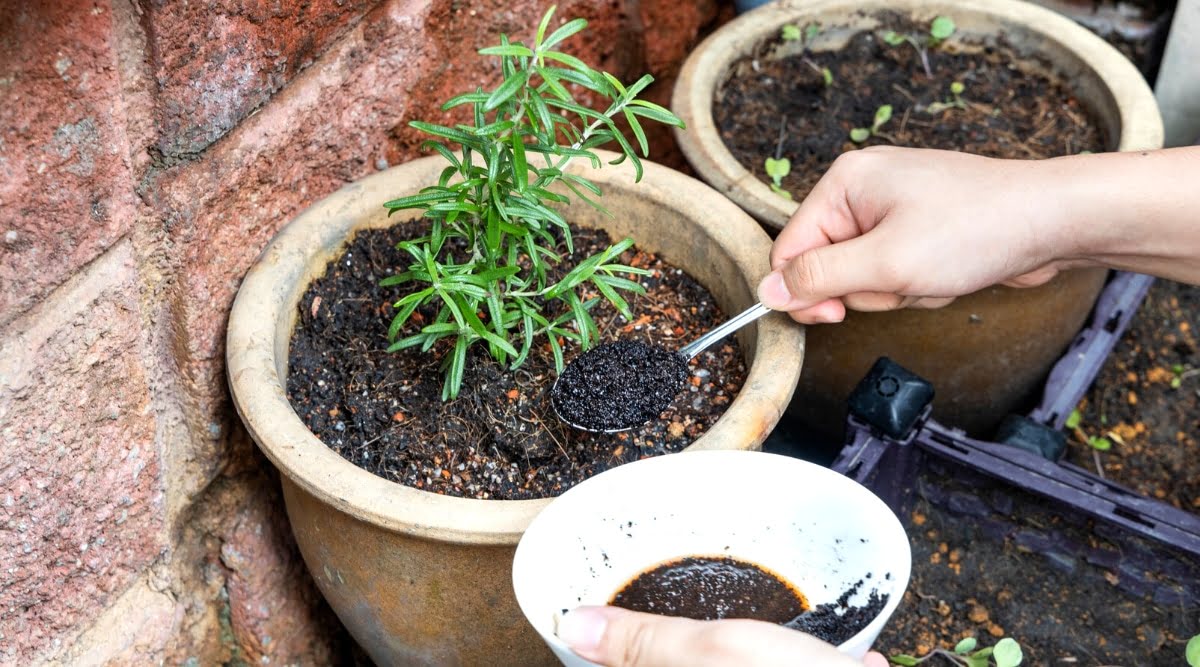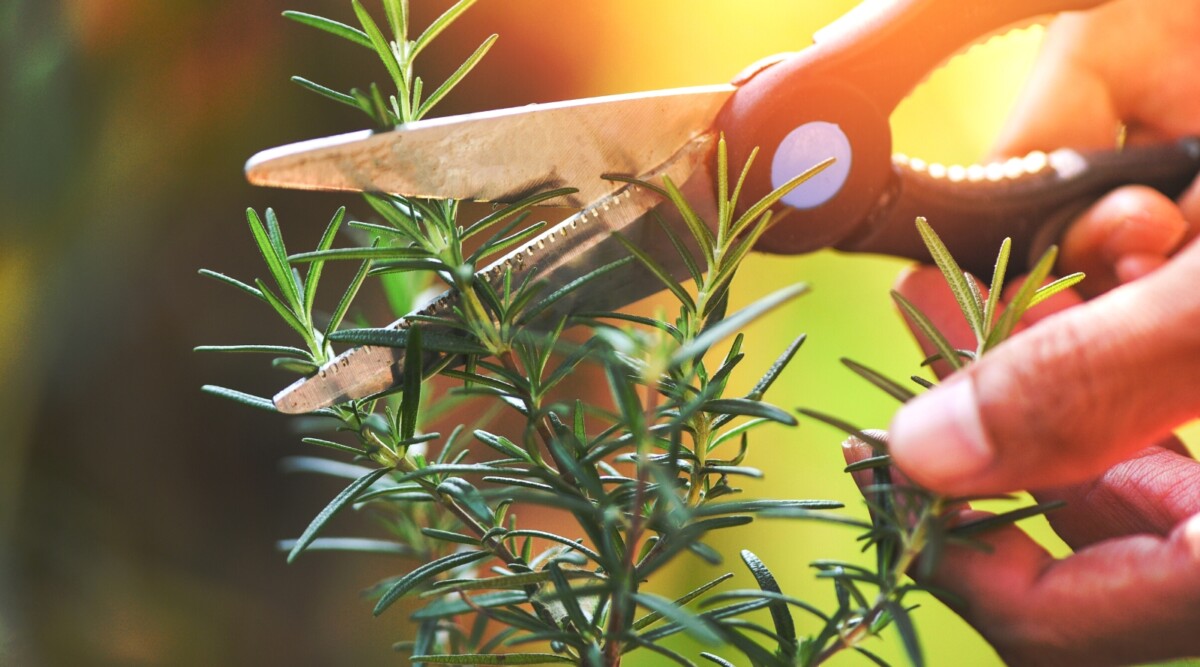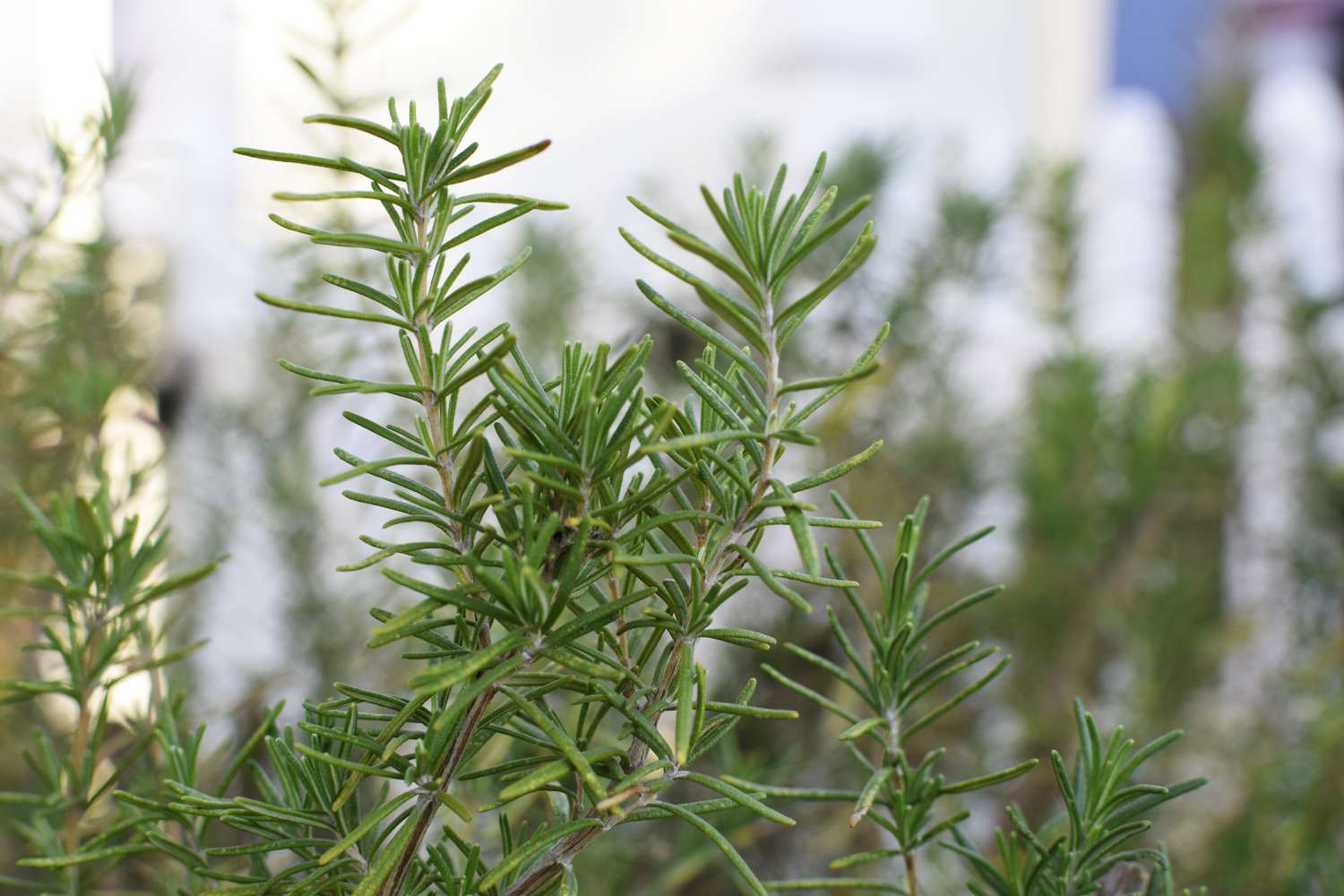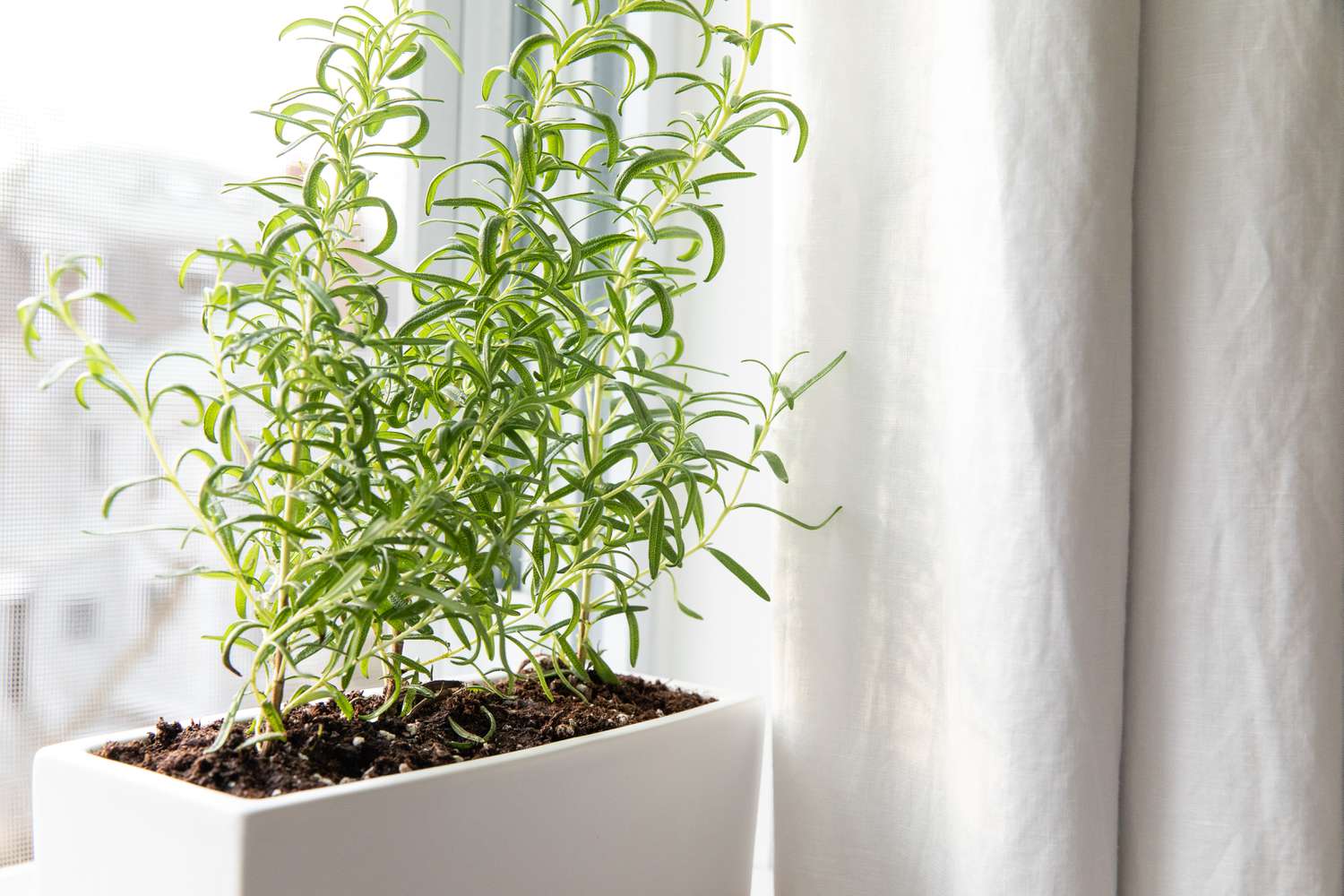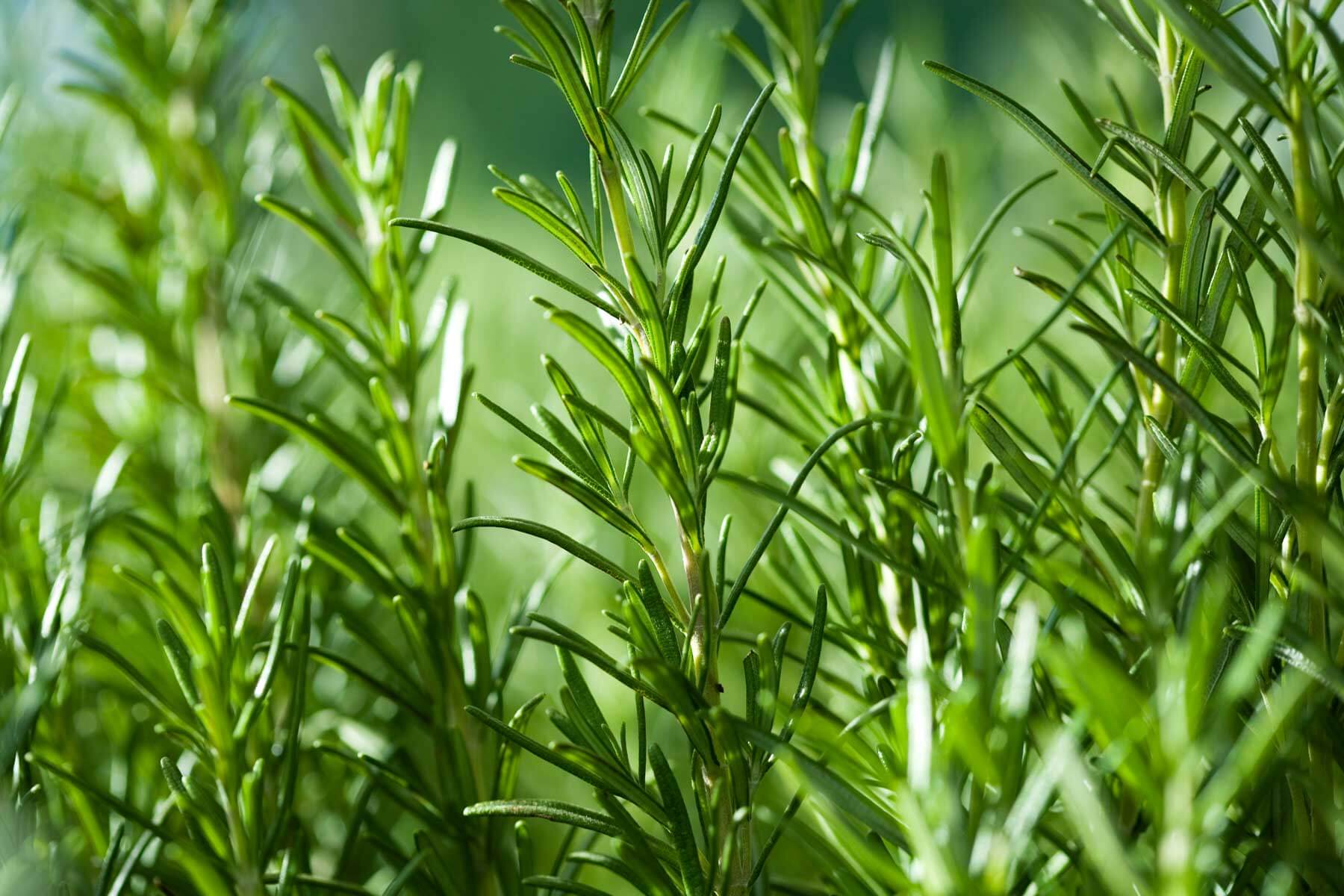Home>Types of Gardening>Edible Gardening>How To Identify Rosemary Plant


Edible Gardening
How To Identify Rosemary Plant
Published: January 28, 2024
Learn how to identify a rosemary plant in your garden and enhance your edible gardening skills. Find out the key characteristics and tips for growing this fragrant and useful herb.
(Many of the links in this article redirect to a specific reviewed product. Your purchase of these products through affiliate links helps to generate commission for Chicagolandgardening.com, at no extra cost. Learn more)
Table of Contents
Introduction
Welcome to the world of edible gardening! There’s something truly rewarding about growing your own food, and one plant that deserves a spot in your garden is the rosemary plant. Rosemary, scientifically known as Rosmarinus officinalis, is not only a beautiful addition to any garden with its fragrant foliage and delicate flowers, but it also offers a plethora of culinary and medicinal benefits.
Whether you’re a seasoned gardener or just starting out, being able to identify the rosemary plant is essential. This versatile herb can be used to add flavor to a variety of dishes, from roasted vegetables to grilled meats. Additionally, its fragrant leaves can be used for herbal teas and homemade skincare products.
In this article, we will dive into the characteristics of the rosemary plant, learn how to identify it based on appearance and scent, and explore common mistakes to avoid when identifying this delightful herb.
So, let’s embark on this aromatic journey and discover the beauty and versatility of the rosemary plant!
Characteristics of the Rosemary Plant
The rosemary plant is a woody perennial herb that belongs to the mint family, Lamiaceae. It is native to the Mediterranean region but is now grown in various parts of the world for its culinary and medicinal uses. Let’s explore the key characteristics of this remarkable plant.
Growth and Habit: Rosemary is an evergreen shrub that can reach a height of up to six feet. It has a bushy and upright habit, with woody stems that become more prominent as the plant matures. The plant has a slow to moderate growth rate and can thrive in both containers and garden beds.
Leaf Structure and Color: One of the distinctive features of the rosemary plant is its needle-like leaves. The leaves are arranged opposite each other on the stem and are about one to two inches long. They are narrow, linear, and have a dark green color on the upper side, while the undersides are lighter in shade.
Fragrance: The aromatic fragrance of rosemary is what sets it apart from many other herbs. When you rub the leaves between your fingers, you’ll instantly be enveloped in a pleasant scent that is often described as piney and slightly camphoraceous. This fragrance is not only delightful but also serves as a natural repellent for certain pests in the garden.
Flowering and Fruiting: Rosemary produces small, delicate flowers that bloom in clusters at the tips of the stems. The flowers can vary in color, ranging from pale blue to lavender, and they add a beautiful touch to the plant. After flowering, the plant may produce small fruits that resemble tiny brown capsules, containing tiny seeds.
The rosemary plant exhibits these characteristics, making it a unique and recognizable herb in the garden. Now that we understand the key features of this herb, let’s explore how to identify the rosemary plant based on its appearance and scent.
Growth and Habit
The growth and habit of the rosemary plant are what make it a versatile and attractive addition to any garden. Let’s delve into the details of how this herb grows and thrives.
Rosemary is an evergreen shrub that typically reaches a height between 2 to 6 feet, depending on the variety and growing conditions. It has a bushy and compact habit, with upright stems that become more woody and distinguished as the plant matures. The dense foliage of rosemary can create a beautiful backdrop or serve as a focal point in a garden bed or container.
This herb has a slow to moderate growth rate, meaning it will not quickly overtake your garden. Its growth pattern allows for easy maintenance and pruning to maintain a desired shape or size. When pruned regularly, rosemary can even be trained into topiaries or hedging.
One of the reasons rosemary is so popular among gardeners is its adaptability to a variety of growing conditions. It thrives in full sun, requiring at least 6-8 hours of direct sunlight daily. Rosemary is tolerant of poor soil conditions, as long as the soil is well-draining. It prefers a neutral to slightly acidic soil pH (around 6.0-7.5) but can tolerate a slightly alkaline pH as well.
In terms of water requirements, rosemary is a drought-tolerant herb, making it suitable for regions with dry or Mediterranean-like climates. It has a preference for moderate moisture levels, so it’s important to avoid overwatering, as this can lead to root rot. It’s best to let the soil dry out slightly between waterings to prevent any waterlogged conditions.
As an evergreen, rosemary retains its leaves year-round, although it may shed some older foliage during winter months. The needle-like leaves are leathery and have a deep green color on the upper surface, while the underside is lighter in shade. They are arranged opposite each other on the stem and emit a delightful fragrance when crushed or brushed against.
Overall, the growth and habit of the rosemary plant make it a low-maintenance and versatile choice for edible gardens. Whether you’re a novice gardener or a seasoned pro, this herb can thrive and provide you with a bountiful harvest of aromatic leaves for culinary and other uses.
Leaf Structure and Color
The leaves of the rosemary plant are not only visually appealing but also play a crucial role in its identification. Understanding the leaf structure and color will help you confidently recognize this herb in your garden.
Rosemary leaves are needle-like in shape, resembling small pine needles or narrow lanceolate blades. They are typically one to two inches long and about 0.1 inches wide. The leaves are arranged opposite each other on the stem, meaning they grow in pairs, with one leaf positioned directly across from the other.
One distinguishing feature of rosemary leaves is their texture. They are leathery and have a slightly rough surface, which adds to their charm and durability. This feature contributes to their ability to withstand environmental stressors and also makes them less palatable to herbivores.
The color of rosemary leaves is a vibrant and rich green. The upper surface of the leaves tends to be darker, while the undersides are lighter in shade. Depending on the variety and growing conditions, the intensity of the green color can vary slightly. However, the leaves generally maintain their vibrant hue year-round, adding a touch of freshness to your garden even in colder months.
It’s important to note that some rosemary cultivars may have slight variations in leaf color. For example, there are varieties with golden or variegated leaves, where the green color is complemented by patches or streaks of yellow or white. These variations in leaf color can add visual interest and diversity to your garden, but the overall needle-like shape and leathery texture will remain consistent.
When it comes to harvesting rosemary leaves for culinary use, it’s best to pick them when they are young and tender, as this is when the flavor and aroma are at their peak. This can be done by gently pinching or cutting off the top few inches of the stem, ensuring that you leave a sufficient amount of foliage for the plant to continue thriving.
The unique leaf structure and vibrant green color of rosemary make it easily recognizable in the garden. Whether you’re using it in your cooking or simply admiring its beauty, the leaves will always be a key characteristic of this remarkable herb.
Fragrance
One of the most distinctive and delightful features of the rosemary plant is its aromatic fragrance. When you rub the leaves between your fingers or brush against the foliage, a captivating scent fills the air, making it instantly recognizable.
The fragrance of rosemary is often described as being both piney and slightly camphoraceous. It has a fresh and invigorating quality that adds a wonderful dimension to any garden or dish.
This aromatic scent is due to the presence of essential oils within the leaves of the rosemary plant. These oils contain various compounds, including pinene, camphor, and cineole, which contribute to the herb’s distinct fragrance.
Not only does the fragrance of rosemary add to its charm, but it also has practical benefits. The scent acts as a natural repellent to certain pests in the garden, such as aphids, snails, and cabbage worms. Planting rosemary near susceptible crops can help deter these pests and protect your plants from damage.
Furthermore, the fragrance of rosemary has been found to have a positive impact on human well-being. In aromatherapy, rosemary essential oil is often used to promote focus, clarity, and mental alertness. Inhaling the scent of rosemary has been shown to stimulate the brain and enhance cognitive function.
Thanks to its invigorating fragrance, rosemary has been used for centuries in traditional medicine. It has been believed to have various medicinal properties, including improving digestion, relieving muscle pain, and boosting the immune system.
When using rosemary in culinary pursuits, the fragrance adds a delightful and aromatic element to dishes. Whether you’re infusing olive oil, seasoning roasted vegetables, or marinating meats, the scent of rosemary can elevate the flavors and create a memorable dining experience.
To fully appreciate the fragrance of rosemary, gently rub a few leaves between your fingers and inhale deeply. You’ll be transported to a sensory garden experience, immersed in the invigorating and captivating aroma that this herb provides.
Flowering and Fruiting
The rosemary plant not only boasts aromatic foliage but also produces delicate flowers and small fruits, adding beauty and interest to its overall appearance. Let’s explore the flowering and fruiting characteristics of this herb.
Rosemary typically blooms in late spring to early summer, although the exact timing can vary depending on the climate and growing conditions. The flowers are small and arranged in clusters at the tips of the stems, creating a lovely display of color. The most common flower colors are shades of blue, ranging from pale blue to deep lavender. However, there are also white and pink-flowered varieties available.
The flowers of rosemary are tubular in shape and have two lips, with the upper lip forming a hood over the lower lip. They attract pollinators such as bees, butterflies, and other beneficial insects, making rosemary a valuable plant for supporting local ecosystems and encouraging biodiversity in your garden.
After the flowering stage, the rosemary plant may produce small fruits, often referred to as capsules or drupes. These fruits are tiny, oval-shaped, and typically brown in color. Each fruit contains several tiny brown seeds.
While the flowers of rosemary add beauty and charm to the plant, they are not the primary reason for its cultivation. The flowers are more ornamental and are typically not used in culinary preparations. However, they can be dried and used in floral arrangements or potpourri to enjoy their beauty and fragrance throughout the year.
The fruits of rosemary are not generally consumed or utilized in cooking. Their main purpose is for seed production and propagation. If you’re interested in collecting seeds from your rosemary plant, allow the fruits to ripen and dry on the plant until they split open naturally. Collect the seeds and store them in a cool, dry place for future use.
It is worth noting that not all rosemary plants will produce fruits reliably. Some varieties are primarily grown for their ornamental qualities, while others are bred specifically for culinary use and may produce fewer or no fruits at all. If your primary interest is in culinary applications, selecting a variety known for its robust flavor and aroma will be more important than its ability to fruit.
The flowering and fruiting stages of the rosemary plant add visual interest and provide support for pollinators in the garden. While the flowers are primarily ornamental, they contribute to the overall attraction of this versatile herb.
Identifying Rosemary Based on Appearance
Identifying rosemary based on its appearance is relatively straightforward once you know what to look for. Let’s explore the key visual characteristics that will help you identify this herb in your garden.
The first thing to note is the growth habit of rosemary. It is an evergreen shrub that typically reaches a height between 2 to 6 feet, depending on the variety and growing conditions. It has a bushy and compact habit, with upright stems that become more woody and distinguished as the plant matures.
Next, pay attention to the leaves of the rosemary plant. They are needle-like in shape and resemble small pine needles or narrow lanceolate blades. The leaves are about one to two inches long and 0.1 inches wide. They are arranged opposite each other on the stem, meaning they grow in pairs, with one leaf positioned directly across from the other.
Rosemary leaves have a vibrant green color. The upper surface of the leaves tends to be darker, while the undersides are lighter in shade. The leaves are leathery and have a slightly rough texture, adding to their durability and resistance to environmental stressors.
When rubbed or crushed, rosemary leaves emit a distinct and pleasing fragrance. The scent is often described as being both piney and slightly camphoraceous. This fragrant characteristic is an excellent way to confirm that you are indeed looking at a rosemary plant.
In addition to its foliage, rosemary produces small, delicate flowers that bloom in clusters at the tips of the stems. The flowers can vary in color, with shades ranging from pale blue to lavender. They add a beautiful pop of color to the plant, but it’s important to note that the flowers are primarily ornamental and not used extensively for culinary purposes.
Overall, when identifying rosemary based on appearance, look for an evergreen shrub with bushy growth, needle-like leaves arranged opposite each other on the stem, vibrant green color, and a distinct piney fragrance when the leaves are crushed. These visual cues will help you confidently recognize and enjoy the beauty of the rosemary plant in your garden.
Identifying Rosemary Based on Smell
The scent of rosemary is a powerful and distinguishing characteristic that can help you identify this herb with ease. When it comes to identifying rosemary based on smell, there are a few key factors to consider.
The fragrance of rosemary is often described as being both piney and slightly camphoraceous. It has a fresh and invigorating quality that is instantly recognizable once you’ve experienced it. When you rub the leaves between your fingers or brush against the foliage, the scent is released, filling the air with its delightful aroma.
To identify rosemary based on smell, take a moment to gently crush a few leaves or run your fingers along the foliage. The distinct piney fragrance will be immediately evident, enveloping your senses and confirming that you are indeed in the presence of rosemary.
When compared to other herbs, the scent of rosemary stands out due to its unique combination of pine and camphor notes. While some herbs may have similar aromas, the specific blend of fragrant compounds found in rosemary sets it apart.
Additionally, the fragrance of rosemary serves not only as a delightful sensory experience but also as a natural repellent for certain pests in the garden. When planted near susceptible crops, rosemary can help deter pests like aphids, snails, and cabbage worms, providing a natural and aromatic defense mechanism.
It’s important to note that the scent of rosemary can vary slightly among different varieties and growing conditions. However, the overall piney and camphoraceous character will remain consistent. Whether you’re growing common rosemary (Rosmarinus officinalis) or a specific cultivar, the distinct fragrance will still be present.
When using rosemary in culinary applications, the scent plays a crucial role in enhancing the flavors of your recipes. The aromatic oils released from the leaves infuse dishes with a delightful aroma, adding depth and complexity to your culinary creations.
Whether you’re enjoying the fragrance of rosemary in the garden, using it in cooking, or simply appreciating its aromatic presence, the unmistakable scent is a telltale sign that you’ve encountered this versatile and enchanting herb.
Common Mistakes in Identifying Rosemary
While identifying rosemary may seem straightforward, there are a few common mistakes that people can make. By being aware of these pitfalls, you can avoid confusion and accurately identify this herb. Let’s explore some of the common mistakes in identifying rosemary:
1. Mistaking Similar Herbs: One of the common mistakes is mistaking rosemary for similar-looking herbs. For example, the herb known as lavender (Lavandula) has similar needle-like leaves, but it has a distinct floral fragrance rather than the piney scent of rosemary. Pay close attention to the leaf structure, color, and fragrance to differentiate between these herbs.
2. Confusing Varieties: Rosemary comes in various varieties and cultivars, some of which have slight differences in their appearance. Different cultivars may have variations in leaf color, growth habits, and flower colors. It’s important to familiarize yourself with the specific variety you are working with to accurately identify it.
3. Misjudging Plant Height: Rosemary is known for its upright and bushy growth habit, but the height of the plant can vary depending on the variety and growing conditions. While some cultivars stay relatively compact, others can grow up to six feet tall. Don’t solely rely on height as a determining factor for identifying rosemary.
4. Focusing Too Much on Flowers: Although rosemary does produce small and delicate flowers, they are primarily ornamental and not the primary identifying feature. The flowers can vary in color from shades of blue to lavender, but they are not exclusive to rosemary. It’s important to consider other visual and olfactory characteristics for accurate identification.
5. Overlooking the Fragrance: The distinct fragrance of rosemary is one of its defining features. Some beginners in gardening may overlook this crucial aspect and solely rely on visual cues. Remember that the scent of rosemary is piney and slightly camphoraceous when the leaves are crushed. Pay attention to the fragrance to ensure accurate identification.
6. Neglecting Leaf Structure: Rosemary leaves have a needle-like shape and are arranged opposite each other on the stem. Pay attention to the unique leaf structure, as similar-looking herbs may have different leaf arrangements or shapes.
By being aware of these common mistakes and paying close attention to the specific characteristics of the rosemary plant, you can confidently identify this versatile herb in your garden and enjoy its culinary and aromatic benefits.
Conclusion
In conclusion, identifying the rosemary plant is an exciting and rewarding endeavor for any gardener or enthusiast. By understanding its characteristics, such as its growth habit, leaf structure and color, fragrance, and flowering and fruiting patterns, you can confidently identify this versatile herb in your garden.
The rosemary plant’s bushy growth, needle-like leaves, vibrant green color, and distinct piney fragrance make it easily recognizable. Additionally, the delicate flowers and small fruits add beauty and interest to its overall appearance.
However, it’s important to be aware of common mistakes in identifying rosemary, such as mistaking similar herbs, confusing varieties, and focusing too much on flowers. By avoiding these pitfalls and paying attention to key visual and olfactory cues, you can accurately identify rosemary in your garden.
Whether you’re growing rosemary to enhance your culinary creations, enjoy its aromatic presence, or take advantage of its medicinal properties, recognizing and understanding this herb is essential.
So, as you embark on your edible gardening journey, embrace the charm and versatility of the rosemary plant. Take delight in its aromatic fragrance, savor the tasty benefits it brings to your recipes, and appreciate its visual appeal in your garden. Happy gardening and may your rosemary plants flourish!

